nsf
Latest

The Arecibo Observatory's telescope has collapsed
The world-famous Arecibo Observatory has collapsed.
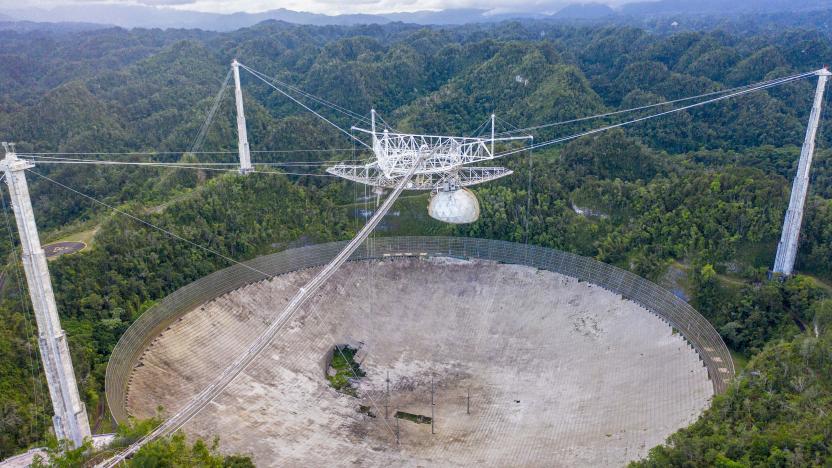
Without the Arecibo telescope, our search for intelligent life is hamstrung
Structural engineers and repair crews have done all that they can but the end result is as we feared: the Arecibo radio telescope has to come down. The venerable space observatory has been out of commission since August when a cable atop Tower 4, which supports the platform, snapped and gutted a 100-foot long section from the telescope’s reflecting dish. At the time, the University of Florida, which runs the facility on behalf of the National Science Foundation, deployed three different engineering teams to investigate the problem.
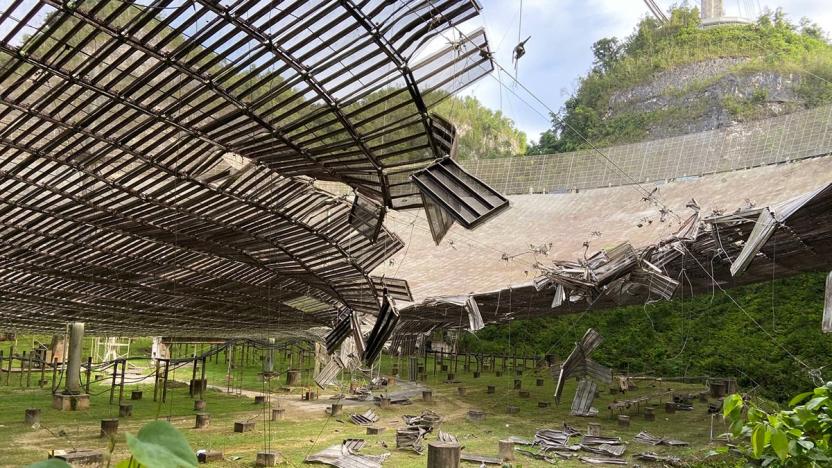
Arecibo Observatory will be torn down because repairs are too dangerous
After 57 years of helping to expand human knowledge and understanding of the cosmos, the story of Puerto Rico’s world-famous Arecibo Observatory is coming to an unfortunate end.
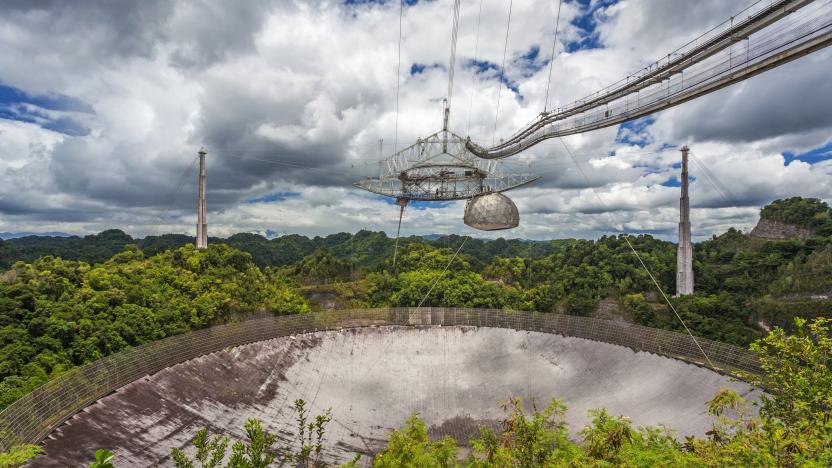
Recent damage to the Arecibo telescope could keep it offline for months
It could take months to repair Arecibo Observatory, the second-largest radio telescope in the world.
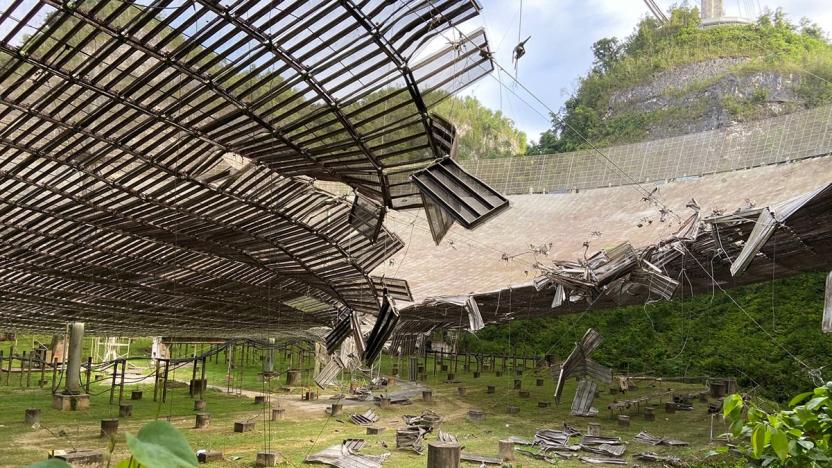
Puerto Rico’s Arecibo radio telescope suffers serious damage
A broken cable damaged the Arecibo Observatory, the second-largest radio telescope in the world.
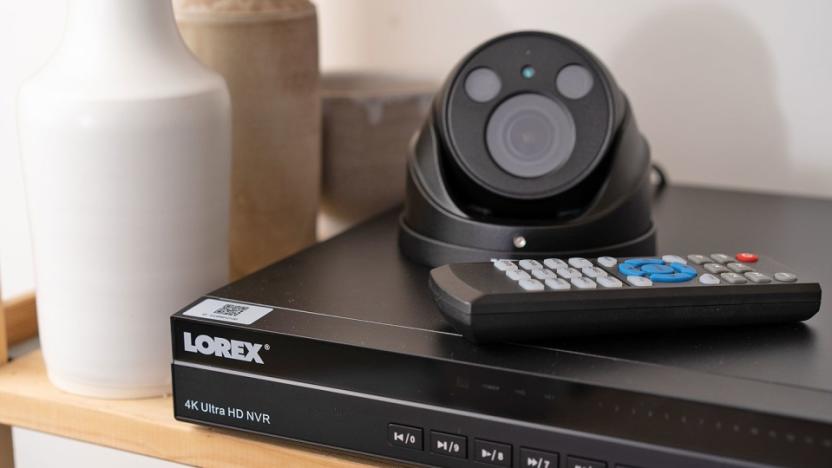
Scientists want to fix our notoriously insecure smart home devices
The dream of a smart home that would automate your life like The Jetsons is more like a nightmare thanks to the lack of security in numerous smart devices. Now, the National Science Foundation (NSF) is intervening with a nationwide project designed to boost internet of things (IoT) security.

Bipartisan Senate bill aims to invest $100 billion in technology R&D
The Endless Frontiers Act would invest $100 billion in AI, high-performance computing, robotics, automation and more.
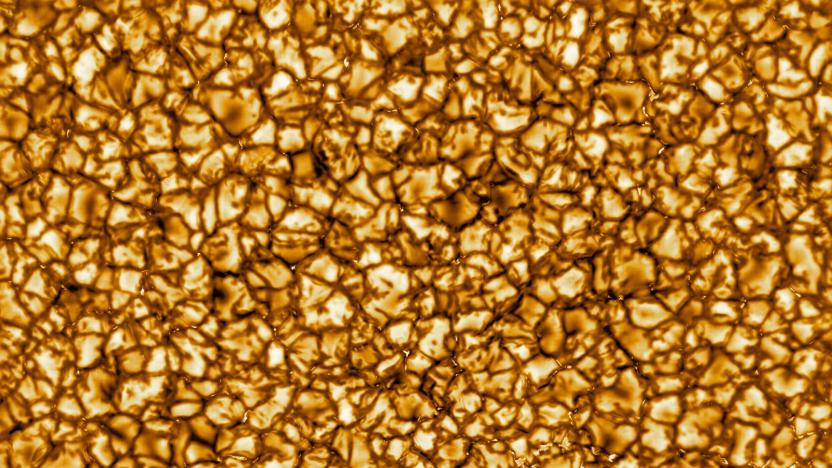
Capturing the Sun's Texas-sized cells in the highest detail ever
The Daniel K. Inouye Solar Telescope (DKIST) started with some controversy, but its first images are already changing the field of solar science. The Maui observatory captured the highest-resolution photos of the sun ever taken, revealing detail down to a mere 18 miles in size. The image above shows turbulent kernel-like cells made up of boiling gases influenced by the Sun's strong magnetic field, each one about the size of Texas.
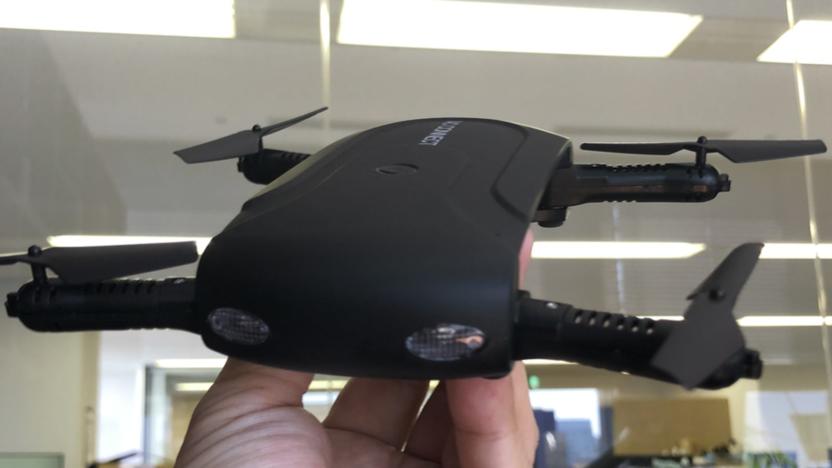
MIT algorithm ensures drones get the freshest data possible
Consider a group of drones that have to constantly exchange information on their position in order to avoid colliding with one another. Or a smart car that needs up-to-the-millisecond sensor data to avoid crashing into objects, other cars or people. While current networks are designed to send a lot of information quickly, they do not manage how fresh that information is. Researchers at MIT are digging into this issue and have created an algorithm that can help optimize how fresh the data is on a simple wireless network.

ICYMI: A medical breakthrough inspired by a kids toy
try{document.getElementById("aol-cms-player-1").style.display="none";}catch(e){}Today on In Case You Missed It: Stanford bioengineers created a centrifuge to separate blood and detect disease, all based on whirligigs from childhood. They estimate the blood cell device would cost only 20 cents a piece to make, and since it's human-powered, could be used all over off-the-grid locations to help diagnose diseases like tuberculosis. The National Science Foundation helped fund research into walking efficiency and the artist who imagined a sad robot dystopia is here. As always, please share any interesting tech or science videos you find by using the #ICYMI hashtag on Twitter for @mskerryd.

ICYMI: Hand over your car to the robot overlords
try{document.getElementById("aol-cms-player-1").style.display="none";}catch(e){}Today on In Case You Missed It: A new parking structure will autonomously park cars without a single human's assistance. Meanwhile Colorado School of Mines is testing small-scale water treatment plants that could be used in neighborhoods rather than one city location. And Canadians sent the US a darling little 'keep your head up' video that has us saying aww! The machine mating video on YouTube can be found here. As always, please share any interesting tech or science videos you find by using the #ICYMI hashtag on Twitter for @mskerryd.

Feds give Google OK to test Project Wing drone deliveries
The US Federal Aviation Authority (FAA) has been very cautious about drone testing in the US so far, but that's about to change. The FAA has granted Google's sister X division (under Alphabet) permission to test Project Wing delivery services below 400 feet at six sanctioned test sites, according to the White House. The flights will be part of a new push by the US National Science Foundation, which is spending over $35 million on unmanned aerial vehicle (UAV) research and testing over the next five years

Science fund lets kids learn 3D printing, gene modification
President Obama declared June 17 to the 23rd to be the National Week of Making, and what better way to celebrate than funding research for kids? The National Science Foundation (NSF) created a $1.5 million "early-concept grant" for five youth-oriented projects. They include 3D printing for inner-city kids and a DNA project that teaches high schoolers to build their own organisms (yep). "A core tenet of the maker movement is that experiences involving active exploration of ideas ... elicit enjoyment and foster lasting learning," says Rutgers' Elizabeth Bonawitz.

ICYMI: Space junk reboot, biological machine v2 and more
#fivemin-widget-blogsmith-image-763516{display:none;} .cke_show_borders #fivemin-widget-blogsmith-image-763516, #postcontentcontainer #fivemin-widget-blogsmith-image-763516{width:570px;display:block;} try{document.getElementById("fivemin-widget-blogsmith-image-763516").style.display="none";}catch(e){}Today on In Case You Missed It: NASA thinks it can extend the life of even dead satellites orbiting Earth with a new solution from the agency and Orbital ATK. Mission Extension Vehicles should go up in 2018 and give the sats battery power for as long as another 15 years. A game developer is trying to make older, classic Nintendo games 3D with an emulator that uses a custom algorithm to separate flat backgrounds into 3D objects. And the National Science Foundation funded work to create a biological machine that can be controlled with electrical or optical signals-- while using it's own muscle tissue for power. We also wanted to make sure you saw the ostrich chase video that is making the rounds. As always, please share any interesting science or tech videos, anytime! Just tweet us with the #ICYMI hashtag to @mskerryd.

Gravitational waves are our window into the early universe
"We have detected gravitational waves. We did it," David Reitze, executive director of the Laser Interferometer Gravitational-Wave Observatory (LIGO), said at a press conference in Washington on Thursday. Reitze has good reason to be excited. LIGO's find is a huge, Nobel Prize-worthy accomplishment on par with CERN's discovery of the Higgs particle in 2012. Just as Higgs particles revolutionized the standard model of physics, gravitational waves are set to do the same to Einstein's theory of general relativity. Simply put, it will fundamentally alter how we view and interact with the universe around us.
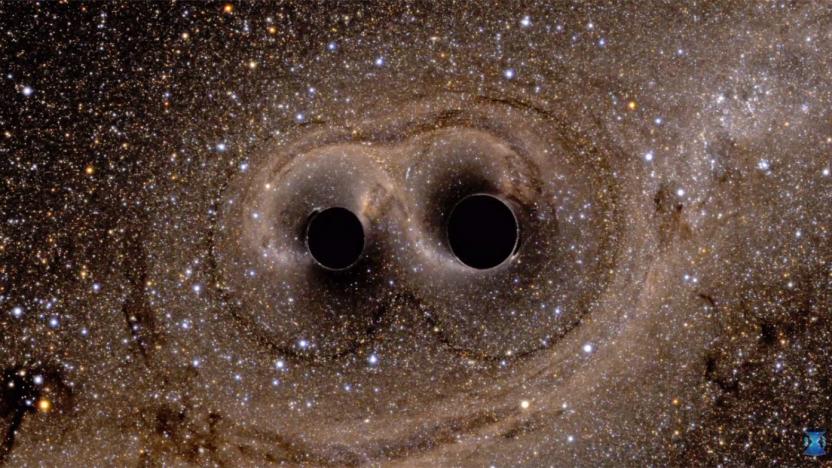
Science confirms that gravitational waves exist
At last, scientists have validated a key part of Einstein's general theory of relativity. The National Science Foundation, Caltech and MIT have confirmed the existence of gravitational waves, or ripples in spacetime. Their two LIGO (Laser Interferometer Gravitational-wave Observatory) detectors measured atomic-scale differences on September 14th, 2015 that point to the collision of black holes (also a new discovery) 1.3 billion years ago, triggering gravity ripples that only just reached Earth. There have long been hints of these waves, but hard evidence has proven elusive until now.

New telescope will be a high-resolution window to the universe
That 3D rendering up there is a new telescope from the National Science Foundation that promises to solve the mysteries of the universe -- or at least take some truly big pictures. Fitted with a 3,200 megapixel camera, the Large Synoptic Survey Telescope will be the largest digital camera in the world. Once operational, it will scan the entire night sky a few times a week for ten years and is expected to provide scientists unprecedented access to previously inscrutable parts of the cosmos. The camera will literally shed light on dark energy that is believed to accelerate the expansion of the universe, but has long evaded definitive probes. Apart from capturing images of exploding supernovae at an unfathomable distance, it can detect and track asteroids in our planet's vicinity.

University of Illinois' Blue Waters supercomputer now running around the clock
Things got a tad hairy for the University of Illinois at Urbana-Champaign's Blue Waters supercomputer when IBM halted work on it in 2011, but with funding from the National Science Foundation, the one-petaflop system is now crunching numbers 24/7. The behemoth resides within the National Center for Supercomputing Applications (NCSA) and is composed of 237 Cray XE6 cabinets and 32 of the XK7 variety. NVIDIA GK110 Kepler GPU accelerators line the inside of the machine and are flanked by 22,640 compute nodes, which each pack two AMD 6276 Interlagos processors clocked at 2.3 GHz or higher. At its peak performance, the rig can churn out 11.61 quadrillion calculations per second. According to the NCSA, all that horsepower earns Blue Waters the title of the most powerful supercomputer on a university campus. Now that it's cranking away around-the-clock, it'll be used in projects investigating everything from how viruses infect cells to weather predictions.

Earth's largest telescope gets to work in Chile after 30 years of planning
Nestled within the Chilean Andes, the new Atacama Large Millimeter-submillimeter Array (ALMA) is now open for space-staring business. The biggest, most complex telescope project to date, ALMA will be able to peer into the deeper reaches of space with "unprecedented power", according to astronomer Chris Hadfield. Covering around half of the universe's light spectrum, between infrared and radio waves, the new telescope should be able to detect distant planets, black holes and other intergalactic notables. The Chilean desert's lack of humidity was a big reason for the telescope's placement, 16,400 feet above sea-level, aiding precision of the scope. But it's a global project, with the US contributing $500 million and making it the NSF's biggest investment ever. From Japan, Fujitsu's contribution to exploring the final frontier consists of 35 PRIMERGY x86 servers, tied together with a dedicated (astronomy-centric) computational unit. The supercomputer will process 512 billion telescope samples per second, which ought to be more than enough to unlock a few more secrets of the cosmos.

Researchers propose à la carte internet services, overhaul for web infrastructure
A quintet of researchers funded by the National Science Foundation have envisioned a new internet architecture, one where features could be purchased à la carte. The proposed framework would allow users to fine tune their experience by choosing from a variety of connection services. Let's say, for example, that a customer's connection is fine for browsing the web, but it doesn't pass muster for streaming content -- a service dedicated to video delivery could be added to close the gap. "Ultimately, this should make the internet more flexible and efficient, and will drive innovation among service providers to cater to user needs," report co-author Rudra Dutta told The Abstract. A piecemeal next-gen web is no easy feat, however, as it would require revamping the web's infrastructure with new protocols for choosing particular features, completing payments and monitoring network performance. The group's rough blueprint will be presented at a conference next week, but you can thumb through their short paper at the source.









